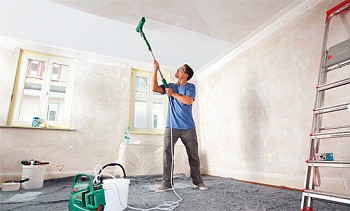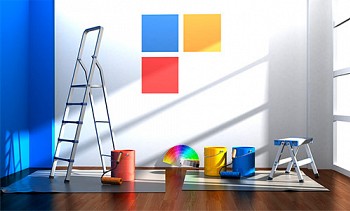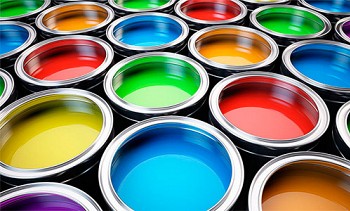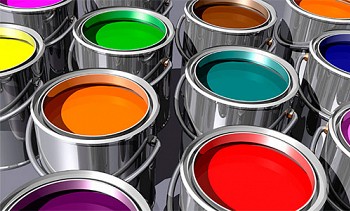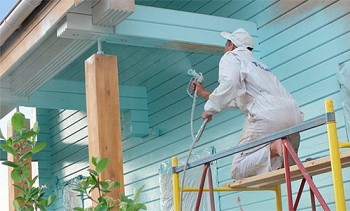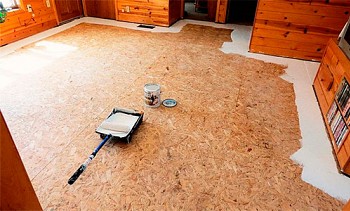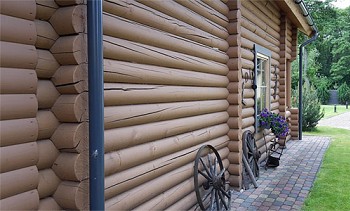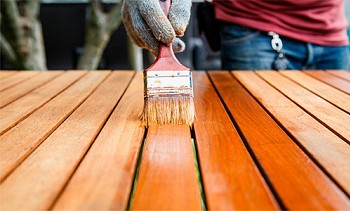All existing types of spray guns are adapted to perform certain tasks - in the domestic or professional sphere. The choice of a suitable device depends on the required quality of painting, the types of paint and varnish material with which it is planned to work, as well as difficulties in maintenance and the need for additional equipment.
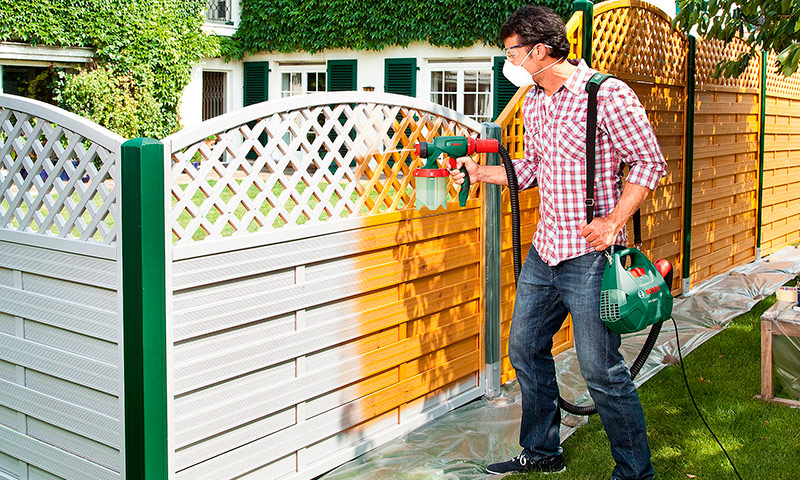
Content:
Pneumatic spray guns: varieties, principle of operation, pros and cons
This type of spray guns is the first that was used to automate the painting process - it was and remains a tool for professional use with the highest quality work.
The general principle of operation is to supply paint and varnish materials from the container to the nozzle, through which a powerful stream of air is passed. The nozzle was designed in such a way that the air stream broke paint droplets into fine dust and carried it out, spraying in the form of a so-called torch, a cone diverging from the nozzle nozzle.
Pneumatic spray guns can be executed with the top or bottom arrangement of a tank for paint.

+ The advantages of pneumatic spray guns
- The paint is applied as thin and even as possible.
- Easy to set up and use.

- Cons of pneumatic spray guns
- A compressor should be correctly selected for the spray gun.
- Not all paint enters the surface to be painted - some remain in the air, forming a colorful fog.
- The device is suitable only for work with paints of liquid consistency.
In total, three subspecies of pneumatic spray guns are produced using different painting technologies. The general principle of operation is the same, the differences are only in the working pressure and the amount of air consumed, which directly affects the efficiency of the device.
High Pressure Spray Guns (HP)
One of the first, but still used, technology for applying coatings. Among all pneumatic devices using this technology are considered the most budget, with the most simplified nozzle design. Literally, the abbreviation of the name translates as "high pressure", under which air is supplied to the nozzle and displayed with paint out.


+ Pros of High Pressure Spray Guns (HP)
- Low price spray gun.
- High quality painting.

- Cons of High Pressure Spray Guns (HP)
- Low paint transfer coefficient - from 35 to 50%. The rest is spread in the form of colorful fog.
- For work, you need a powerful productive compressor.
- If you want to get a certain thickness of the paint layer, you may have to make several passes.
The use of such spray guns is unlimited, it’s just an outdated and not so effective technology - if you need a reliable machine for minimal money, then among pneumatic HPs there is no competition.
Spray guns High Volume - Low Pressure (HVLP)
For the operation of the spray gun does not necessarily need a lot of pressure at the exit - this idea was implemented in a technology whose name is literally designated as a large volume - low pressure. This means that the air stream breaks the paint entering the nozzle, but the shape of the nozzle reduces the outlet pressure. This increases the clarity of the paint torch, and lower pressure allows you to hold the spray gun closer to the surface to be painted, without fear of "inflating" the already applied, but not dried paint. Together, the transfer efficiency of such devices grows to 65%.


+ Pros of HVLP spray guns
- Profitability - up to 15% compared with HP technology.
- Less colorful fog.

- Cons of HVLP spray guns
- The price is significantly higher compared to HP.
Such devices are “workhorses” - the price-quality ratio makes them the most common among medium-level spray guns.
Spray Guns Low Volume - Low Pressure (LVLP)
If the paint lays on the surface with such a thin layer that it is necessary to get its thickness with additional passes, it makes sense to increase the work efficiency due to the ability to adjust the size of the sprayed drops. This is the main feature of the spray technology "low air volume at low pressure", which allows to increase the transfer coefficient to 80%.


+ Pros of spray guns LVLP
- Maximum efficiency - ideal for expensive paints.
- To work, you need a compressor that is not as powerful as for spray guns with other spraying technologies.
- The speed of work is not lost, due to the increased transfer coefficient.

- Cons of spray guns LVLP
- It’s impossible to completely get rid of the colorful fog.
- The high price of the spray gun, although with regular use it justifies itself.
LVLP spray guns are professional devices that it is far from always advisable to purchase for home use.
Electric spray guns: varieties, principle of operation, pros and cons
The classic electric spray gun is a universal device of a household class, although some of the design advantages made it a good solution for professional use. All such types of spray guns for painting are divided into groups, depending on the principle of operation and mobility of the device:
Airless electric spray guns
This method of applying paint is versatile in terms of the ability to use paints and varnishes with a high level of viscosity. In such devices, paint is supplied to the nozzle by a piston pump, which develops a lot of pressure, and spraying occurs due to the nozzle design. This principle of action breaks up droplets of paint into small particles, but they are significantly larger than those that are formed during the operation of a pneumatic spray gun.


+ Pros of Airless Spray Guns
- Lack of colorful mist - droplets of paint are heavy enough so that they do not linger in the air.
- The pump does not have to be with high engine power and can be located directly on the spray gun itself.
- Low price.

- Cons of airless spray guns
- A relatively thick layer of paint is applied to the surface - the consumption of paints and varnishes is slightly higher than that of pneumatic devices.
- Despite the versatility of the device, it is desirable to bring each paint to a certain level of viscosity. Too liquid will begin to form streaks, and a thick one can clog the nozzle nozzle.
- Does not provide high quality staining.
As a result, airless spray guns are mainly a device for domestic use, where versatility and mobility are appreciated. On an industrial scale, due to the high consumption of paint, it is more rational to use it when applying primers, when the speed of work comes to the fore and ideal quality is not required.
Air electric spray guns
Here, in general, the same principle of operation is used as with pneumatic devices - the paint is fed into the nozzle and broken into dispersed dust by an air stream. The main difference is in the method of obtaining the air flow. In electric spray guns, solenoidal or turbine electric motors are used, which, depending on the power, are mounted directly into the body of the spray gun or made separately.

Spray guns with freestanding engines can ride behind the operator like a vacuum cleaner or they can be hung on your shoulder like a bag - for this, special mounts are provided.


+ Pros of Airborne Electric Spray Guns
- High quality of painting - paints and varnishes are transferred to the surface with a thin even layer.
- Mobility. Even devices with a freestanding supercharger are light enough to be able to move around with them during operation.
- The ability to choose the power of the device depending on the needs.

- Cons of air electric spray guns
- During operation, a colorful fog forms - the use of protective equipment is mandatory.
- Since the air blower does not have a receiver, the engine runs continuously. In this case, the noise of the motor is comparable to a vacuum cleaner.
As a result, the scope of application of airborne electric spray guns has no special restrictions - power and performance can be selected for domestic and professional use.
Mains spray guns
Such devices make up the vast majority of those that are on the market. These include both pneumatic and electric spray guns: in the former, the electric motor is part of the compressor, and in the latter, it directly rotates the rotor of the pump or supercharger.


+ Pros of network powered spray guns
- An opportunity to pick up a spray gun of necessary power.
- The period of continuous operation is limited only by the capabilities of the electric motor.

- Cons of network powered spray guns
- To work in places without central power supply, you need a generator.
- Operator mobility is limited by the length of the power cord.
- The wire may twist and interfere with work.
The restriction on the use of network spray guns is only one - if the facility does not have electricity - from a stationary power grid or generator.
Battery powered spray guns
Despite the widespread electrification, this class of devices also found its buyer. They are used not only in places without a stationary power supply, but also simply to increase the mobility of the operator, which is often required during painting work that is carried out from the towers.


+ Pros of cordless spray guns
- The complete absence of wires - there is no binding to the outlet and the operator can move as you like without fear of getting entangled in the power cord.
- If necessary, you can connect the spray gun to the network.

- Cons of battery spray guns
- Due to the battery, such a spray gun is significantly heavier.
- Battery life is usually limited to 20-30 minutes.
- There is no way to make an autonomous high power spray gun.
Since battery powered spray guns are significantly more expensive than network models, it makes sense to purchase them only if they are supposed to be used intensively.
Paint stations
These are powerful devices capable of delivering paint directly from a bucket. The spray gun and the paint pump itself are separate for these devices. During operation, the operator holds in his hands a small spray gun to which paint is supplied under high pressure. The electric motor with pump are located on a separate platform. In the design of some devices, wheels are provided for more comfortable movement of the unit together with paint. Such spray guns have many adjustments. They are advisable to apply for large volumes of work at construction sites.

Manual mechanical sprayers
If a large amount of work is expected in an area without electricity, then even using an autonomous spray gun in the presence of a spare battery is not practical - it will last about an hour of continuous operation.
The solution will be manual types of spray guns - they are a metal or plastic cylinder, in which there is a mechanical plunger pump, like a car. A pair of hoses emerge from the body - one for pumping into the internal container of the sprayed solution, and the second goes directly to the sprayer.

There is also a number of household devices in which the composition for spraying is simply poured into the cylinder, then it is sealed and air is pumped into the pump.
The pump operates in two modes - they are usually switched by ball valves. First, a spraying composition is pumped from the external container, and then pressure is pumped into the internal container. When the pressure reaches the desired value, then you can start work.
For ease of use, such spray guns are equipped with handles up to two meters long, which allows you to paint large areas with a minimum of operator movement.
Airless and airborne staining methods
In hand-held devices, these staining methods work somewhat differently. With airless spraying, air is pumped into the tank, which creates a pressure that pushes the composition for spraying out of the nozzle. It is difficult to achieve uniform application of the composition to the surface to be painted, therefore such devices are most often used for spraying plants with chemicals or for treating surfaces with antiseptics or anti-corrosion compounds.
The air application method works in much the same way, but when spraying, the composition is additionally mixed with air and with it leaves the nozzle in the form of a torch, which allows you to evenly apply the composition for spraying.
What to look for when choosing a manual spray gun
The main characteristics on which quality and usability depend are as follows:
1. Tank capacity. Direct dependence - the larger the tank, the more composition can be sprayed before refueling. Spray guns are usually equipped with containers of 2-2.5 liters, and spray guns, in which the composition is poured directly into the working tank, can hold 10-15 liters.
2. Operating pressure. Since the pressure has to be maintained manually, most devices are designed to operate at 5-6 atmospheres. For monitoring, a pressure gauge is usually installed.
3. Performance. It shows how much of the composition the spray gun can spray for a minute - the speed of work depends on this.
Since the mechanical spray gun has no engine, this is a very reliable and unpretentious design. It is the best suited for working in suburban areas or in other places where there is no electricity.



